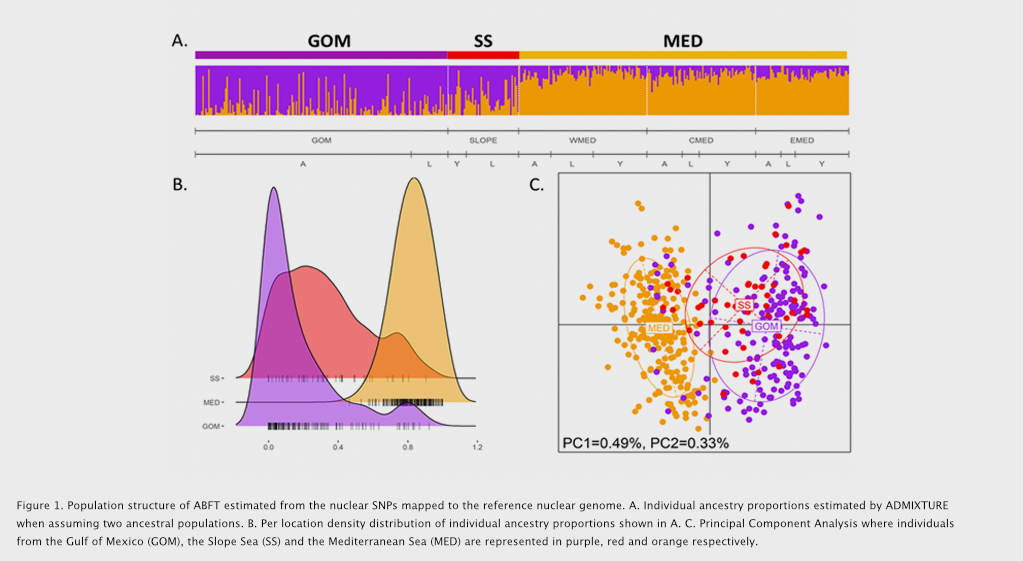NEWS & INSIGHTS

March 13, 2023
Genetics paint a complex picture of bluefin spawning.
Zooming into the evolution of Atlantic Bluefin tuna (Thunnus thynnus) using high-throughput sequencing: towards a phylogenomics and population dynamics informed management
Since 1991, management of Atlantic bluefin tuna has been based on a so-called “two-stock” theory that assumes two things:
1) that there are two stocks (east and west) split by an arbitrary line at 45 degrees longitude, and 2) that these two stocks are distinct and show spawning site fidelity to either the Gulf of Mexico (west) or the Mediterranean (east). While many of the pillars of the two-stock theory have long been up for debate, genetic analysis is starting to show just how complex these fish may really be.
In general, genetics has potential to show us more about where and how fish spawn. While this “Stock ID” work is new and far from complete, it is already showing some interesting observations. For example, in the dissertation linked here, by Natalia Diaz-Arce, it is shown that 12 fish sampled from the Gulf of Mexico in her study were determined to be genetically “eastern” fish. Furthermore, these fish were determined to be in spawning condition and in the Gulf of Mexico during the spawning period (Pages 90-93).
Now, the work being done out of Spain is in its infancy and there is far more to the paper linked here than this simple observation about 12 fish. But the very presence of 12 “eastern” fish in spawning condition in the Gulf of Mexico during spawning season is a highly intriguing finding. Such a finding hints at a far more complicated picture of Atlantic bluefin spawning behavior than is currently assumed by ICCAT.
It should be noted that the linked paper is still a dissertation and is thus not peer reviewed. It is also one of the first papers of its kind that delves deeply into the Stock ID story of Atlantic bluefin using genetic analysis. That said, the paper is worth a read if you are interested in this burgeoning area of bluefin science.

